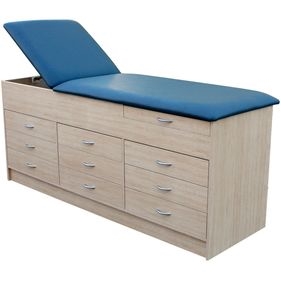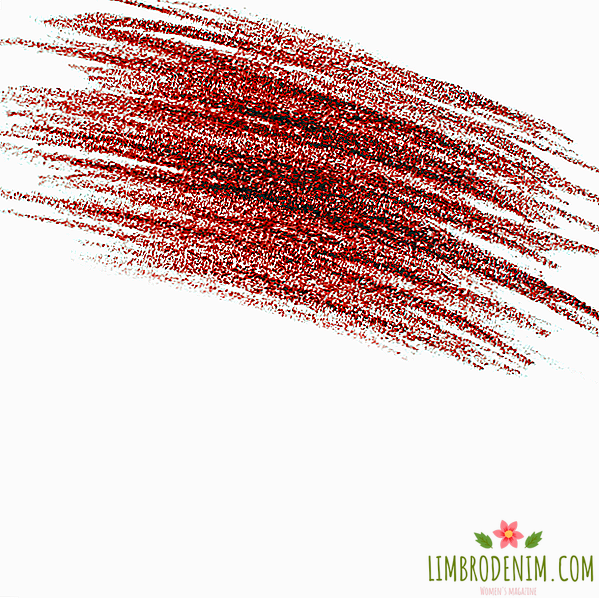Lecturer Ekaterina Pavelko about the Russian Saint Martins and the immortality of gloss
Under the heading "Case" We acquaint readers with women of different professions and hobbies that we like or are simply interested in. This time we talked with Katya Pavelko - the head of the educational program "Fashion" at the Higher School of Economics and the former fashion director of Esquire magazine. She told how one of the most promising design departments in the country was created, why the gloss dies only in Russia and when the domestic Playboy was one of the leading fashion magazines.
About work in Russian gloss
In the fashion industry, I was quite unexpected. When I studied at the history department of Moscow State University, a friend called me to earn money at an insurance company. For a month of work, I went into a terrible minus, because I was very bad at handling numbers. It became clear that you need to start earning in another way. It's good that dad gave me a camera, and I took off pretty well. So, having seen the vacancy in the magazine “Do not sleep,” I was able to get a job with them as a secular photographer. I went to all the Moscow events, visited all the clubs under the guise of work, and then I almost understood that I was most interested in fashion.
In addition, at the opening of the Leform boutique, I met Masha Fedorova, who at the time was a fashion editor for Playboy magazine. She asked me to make a portrait of Dirk Bikkembergs, who was in Moscow for the occasion. Then I finally made sure that I wanted to engage in fashion, but I had a choice: either to leave to study photography abroad, or to try myself in journalism. At about the same time I met my future husband and received an invitation to the magazine "Show" (such a forerunner of the "Posters") in the "Things" section, so I decided to stay in Moscow. The magazine never came out because the 1998 crisis happened. But soon the Playbill itself opened, where I also managed to work. From there I migrated to Vogue - I came to the fashion department for an interview, but they only wrote about culture. I was not very interested in going on the gossip, but I was very lucky with the editor Jurate Gurauskaite.
At some point I realized that I didn’t want to engage in women's fashion, so I did a little work in OM magazine and then moved to Playboy, where I finally understood that the work of a fashion editor is my dream. Playboy at that time and under the leadership of Maxim Maslakov was very cool: a large section of fashion, a lot of good shooting. Working there, I first went to shows in Milan, where I realized how this industry works on the Hamburg account, and was very impressed. Then I met Philippe Bakhtin, who very ingeniously invited me as a fashion director at the newly opened Esquire, saying that since my husband looks so cool, it means that I’ll definitely cope with the men's fashion. I stayed there for eleven years.
The peculiarity of our approach was that at one point we decided: we do not want to shoot models. First, this market was not developed at that time and all the magazines shot the same models. And secondly, we were inspired by the approach of George Lois, the legendary director of American Esquire (he shot it on the cover of Muhammad Ali as Saint Sebastian and added a mustache to Svetlana Stalin). The first three months of work, we carefully studied the archives, starting from the 60s, to penetrate into all the tricks. Thanks to these materials, we learned to shoot things without models. They also decided that it was much more interesting for the reader to associate himself not just with a model in beautiful clothes, but as an interesting and significant person in the same things. In my opinion, to make a man's gloss as a tracing paper from a woman is completely pointless. Most men have a slightly different consumption system, so trying to sell them new items every six months, explaining this by trends, is much more difficult.
About the fashion industry in the era of instagram
I do not share the popular notion that gloss is dying. There are many foreign magazines that I’m waiting for and I read from cover to cover every time: GentleWoman, Fantastic Man, System, supplement to the New York Times - T-magazine. But, unfortunately, in Russia, glossy journalism is really declining. I think at some point we will reach the bottom, some more magazines will close, and just then something fundamentally new will appear.
At the same time, I am often not satisfied with the quality of fashion journalism on the Internet, simply because there has not yet appeared an adequate system, and besides, not everyone has enough money and time for quality content. Large glossy magazines, with rare exceptions, do not do well with social networks. In this sense, I love the Nowness project the most - they work well in all venues. But I think that it will take two or three years, and everything will finally return to normal.
The fashion world still has to change. The system with shows twice a year is old-fashioned in its own way, and designers have to be smarter and harder to make their thing almost impossible to copy and sell on AliExpress in huge batches. Previously, it was possible to be Gucci brand and calmly, without jumping above your head, to sell things with a beautiful logo. Now Alessandro Michele works for them, he makes amazingly complex, luxurious and baroque clothes that are almost impossible to repeat. This level of work is very expensive, but also forces the consumer to immediately want this thing. But there are still not too many examples of this approach. Besides Michele, I can single out perhaps Raf Simons and his amazing work with Calvin Klein.
About fashion at university
Before leaving Esquire, we agreed with the management of the HSE Design School that I would conduct a short course of lectures. But soon after the dismissal, they invited me to the head of the educational program "Fashion" with a rather large work front. The design direction at HSE is an interesting and fast-growing project that wants to become the most influential design school in the country. The benefit of the niche is not yet occupied. By the way, in this area, only one I am not a designer, and my course is called "Art Direction in Fashion", where students learn conceptually to develop a brand, collection, advertising company, visual window dressing, to organize shooting lukbukov.
In the "HSE" we were faced with the task of making fashion design a separate academic direction. The program was written spectacular and progressive, it was defended in front of the university council, from which, as a result, received flattering comments. During the preparation of the document, we read everything that could be learned about Saint Martins and Parsons: it is very important to know how leaders work in this area. But the already existing "project system" of the university impressed me a lot. This is an approach in which the student at the end of each module must submit his own creative work, which will be included in his full-fledged professional portfolio. My main task is to make these works as powerful and interesting as possible so that they can enter the professional market.
Especially impressive in this sense are the shows. We try to explain to students that this is not only clothing, but also an emotional and capacious statement. So they have to not only invent things, but also fully take on the concept of the event: think about visual and musical design, choose models, formulate the main idea and make it obvious to the audience. I think we have already achieved great success in this genre. Not only Russian media, but also BuzzFeed and American Vogue wrote about the shows of our students.
The Russian fashion market is now truly hungry for qualified personnel - there are not so many of them. Hope we can fix this situation. And the main problem of our fashion industry is that the textile industry is underdeveloped. But, I think, and here sooner or later the situation will improve.




